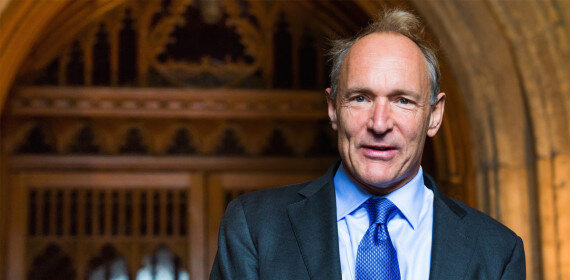The inventor of the World Wide Web, Tim Berners-Lee, wants us to take back control of the internet
Great story from the New York Times:
Tim Berners-Lee, at home in Oxfordshire, England, envisions a framework in which personal online data could be stored in a “pod” that the person controlled.
Three decades ago, Tim Berners-Lee devised simple yet powerful standards for locating, linking and presenting multimedia documents online. He set them free into the world, unleashing the World Wide Web.
Others became internet billionaires, while Mr. Berners-Lee became the steward of the technical norms intended to help the web flourish as an egalitarian tool of connection and information sharing.
But now, Mr. Berners-Lee, 65, believes the online world has gone astray. Too much power and too much personal data, he says, reside with the tech giants like Google and Facebook — “silos” is the generic term he favors, instead of referring to the companies by name.
Fueled by vast troves of data, he says, they have become surveillance platforms and gatekeepers of innovation.
Regulators have voiced similar complaints. The big tech companies are facing tougher privacy rules in Europe and some American states, led by California. Google and Facebook have been hit with antitrust suits.
But Mr. Berners-Lee is taking a different approach: His answer to the problem is technology that gives individuals more power.
The goal, he said, is to move toward “the web that I originally wanted.”
“Pods,” personal online data stores, are a key technical ingredient to achieve that goal. The idea is that each person could control his or her own data — websites visited, credit card purchases, workout routines, music streamed — in an individual data safe, typically a sliver of server space.
Companies could gain access to a person’s data, with permission, through a secure link for a specific task like processing a loan application or delivering a personalized ad. They could link to and use personal information selectively, but not store it.
Mr. Berners-Lee’s vision of personal data sovereignty stands in sharp contrast to the harvest-and-hoard model of the big tech companies. But it has some echoes of the original web formula — a set of technology standards that developers can use to write programs and that entrepreneurs and companies can use to build businesses.
He began an open-source software project, Solid, and later founded a company, Inrupt, with John Bruce, a veteran of five previous start-ups, to kick-start adoption.
“This is about making markets,” said Mr. Berners-Lee, who is Inrupt’s chief technology officer.
More here. Berners-Lee expounds his vision further in this Verdict/Reuters interview:
Berners-Lee explained that this was the original intention for the World Wide Web:
“What I wanted to do was to build a big collaborative space in which everybody could read and write, and everybody could have a webpage and every company could have their products on the web and everything could be linked together to be very efficient. To a certain extent, it was great that the web took off. I could’ve never imagined that we would get so much stuff on it.”
However, he believes that the web has changed significantly since its “golden age”:
“For ten years or so it was exciting because it looked like it would be a place to break down international barriers and it would allow each person to be their own independent self.
“There was a golden age. People talked about the long tail when they said that most of the value on the web is from all of the small people. Isn’t that amazing? When you multiply it there are so many small, medium-sized websites out there. The value we get out of it is just more than anybody imagined.
But if you talk to a millennial now, they don’t recognise that as the web they have right now. It’s ironic as they spend all their time on the same social network. They are in fact within a silo being constrained by the capacity of a particular social network, just like AOL in a way.”


